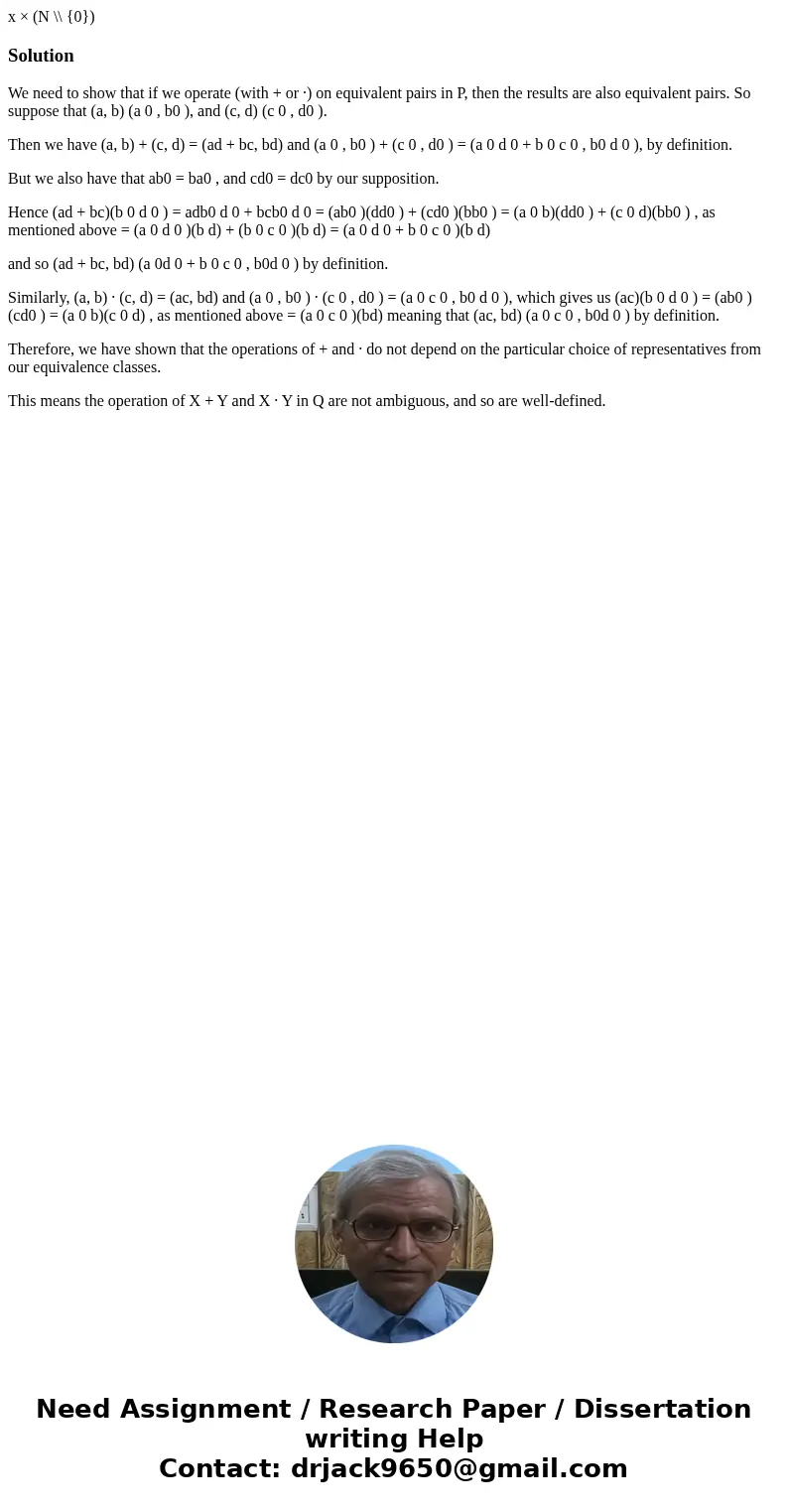x N 0 SolutionWe need to show that if we operate with or
Solution
We need to show that if we operate (with + or ·) on equivalent pairs in P, then the results are also equivalent pairs. So suppose that (a, b) (a 0 , b0 ), and (c, d) (c 0 , d0 ).
Then we have (a, b) + (c, d) = (ad + bc, bd) and (a 0 , b0 ) + (c 0 , d0 ) = (a 0 d 0 + b 0 c 0 , b0 d 0 ), by definition.
But we also have that ab0 = ba0 , and cd0 = dc0 by our supposition.
Hence (ad + bc)(b 0 d 0 ) = adb0 d 0 + bcb0 d 0 = (ab0 )(dd0 ) + (cd0 )(bb0 ) = (a 0 b)(dd0 ) + (c 0 d)(bb0 ) , as mentioned above = (a 0 d 0 )(b d) + (b 0 c 0 )(b d) = (a 0 d 0 + b 0 c 0 )(b d)
and so (ad + bc, bd) (a 0d 0 + b 0 c 0 , b0d 0 ) by definition.
Similarly, (a, b) · (c, d) = (ac, bd) and (a 0 , b0 ) · (c 0 , d0 ) = (a 0 c 0 , b0 d 0 ), which gives us (ac)(b 0 d 0 ) = (ab0 )(cd0 ) = (a 0 b)(c 0 d) , as mentioned above = (a 0 c 0 )(bd) meaning that (ac, bd) (a 0 c 0 , b0d 0 ) by definition.
Therefore, we have shown that the operations of + and · do not depend on the particular choice of representatives from our equivalence classes.
This means the operation of X + Y and X · Y in Q are not ambiguous, and so are well-defined.

 Homework Sourse
Homework Sourse